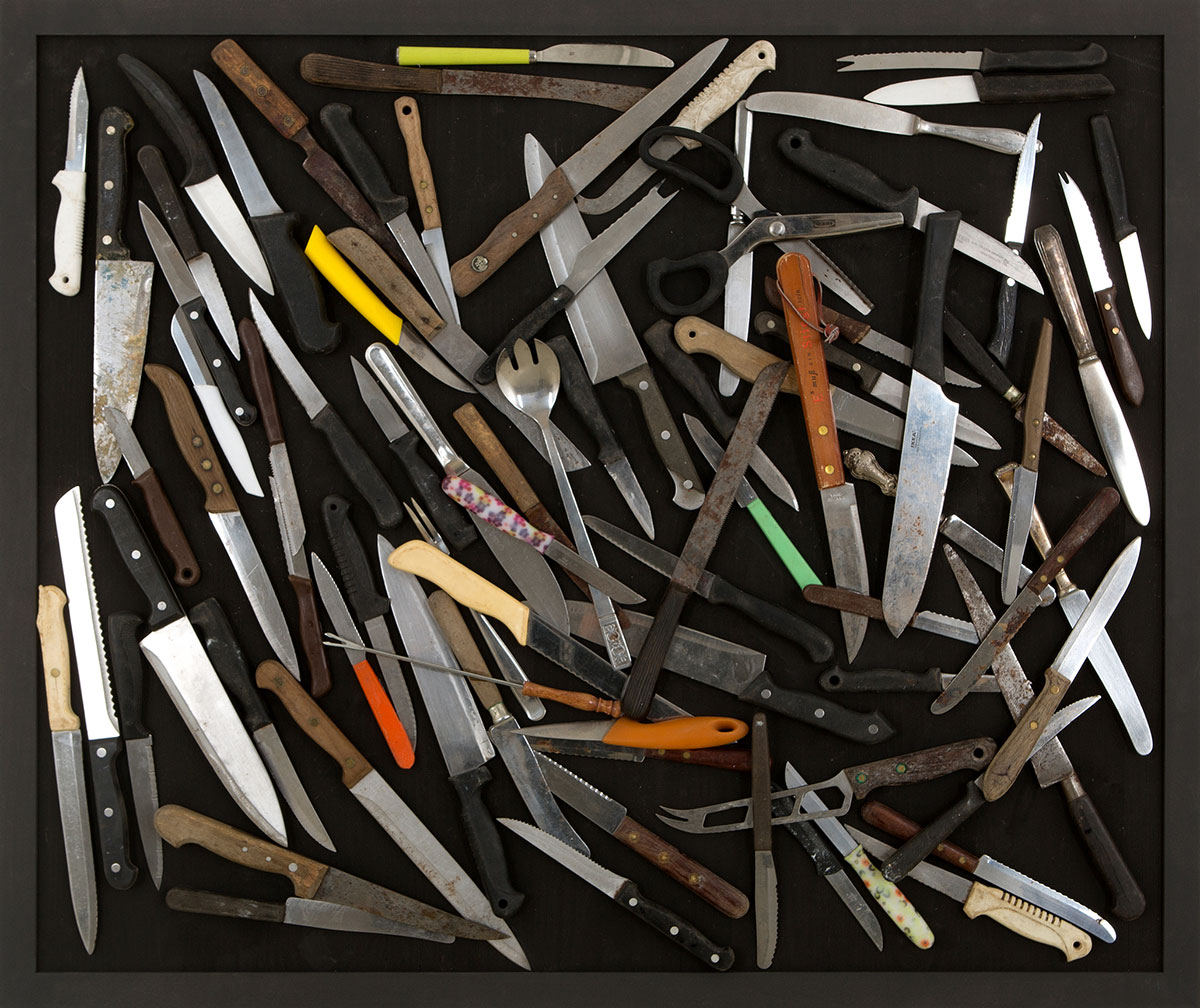ART CITIES:Vienna-Daniel Spoerri
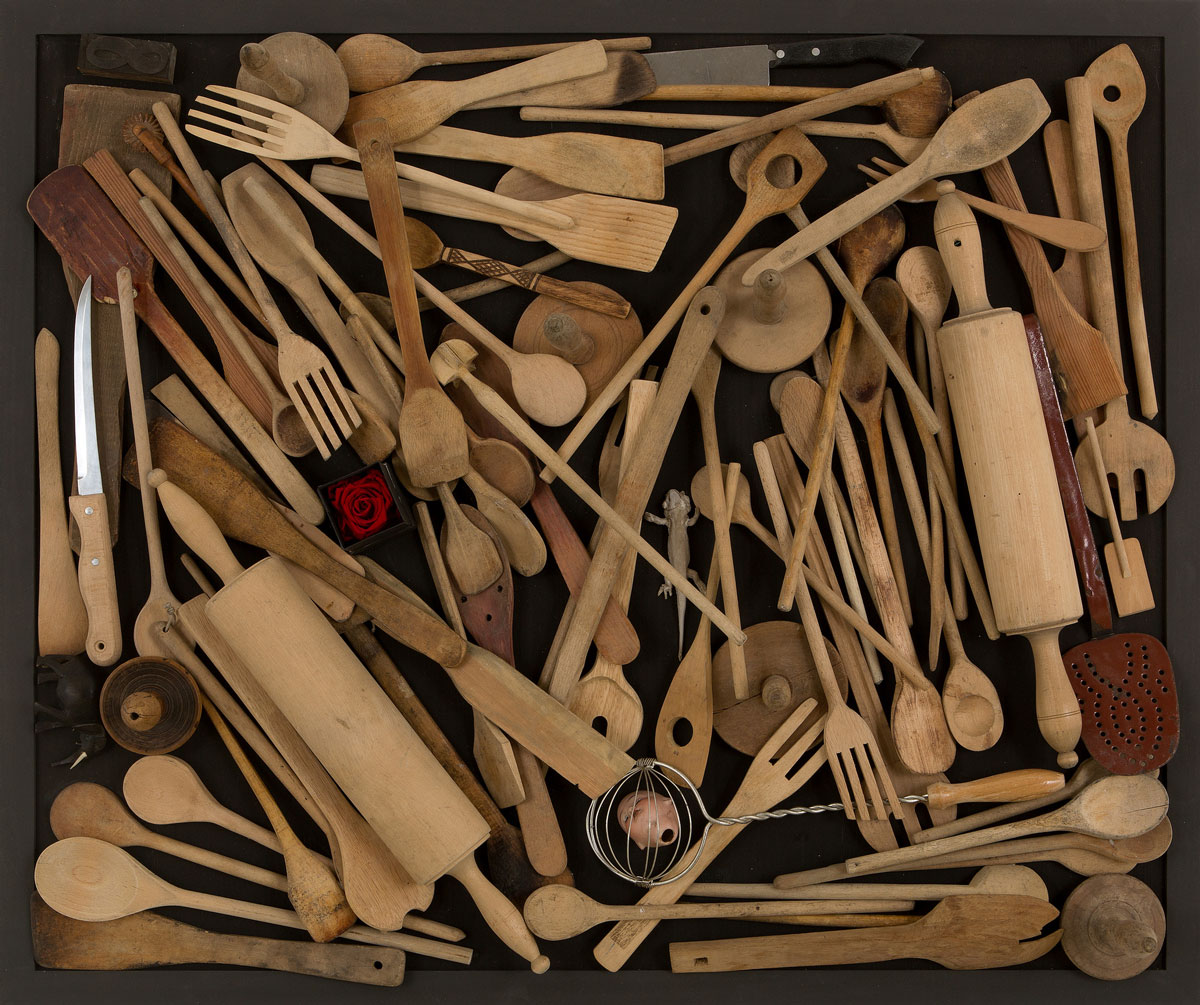 According to the manifesto of “Nouveau Réalisme” formulated in 1960, a work of art must come into being with as little intervention by the artist as possible. Within his circle of fellow artists and friends it was Daniel Spoerri who realized this maxim more radically than anyone else. He would declare a found object, a seller’s trestle table at a Parisian flea market, for example, to be a work of art simply by appending his signature to it.
According to the manifesto of “Nouveau Réalisme” formulated in 1960, a work of art must come into being with as little intervention by the artist as possible. Within his circle of fellow artists and friends it was Daniel Spoerri who realized this maxim more radically than anyone else. He would declare a found object, a seller’s trestle table at a Parisian flea market, for example, to be a work of art simply by appending his signature to it.
By Efi Michalarou
Photo: Galerie Krinzinger Archive
The exhibition “Weißt du, schwarzt du?” shows Daniel Spoerri’s works from the past 30 years. Various work cycles can be seen, from assemblages from the 1990s to a series of material images that were created in 2020-21. In addition to the much-discussed “Faux Tableau Pièges” and the diary-like series one-day boxes, on show are works that were created in dialogue with artefacts from the Natural History Museum. The sculpture from the “Tribulum” series, whose body is made from the original agricultural tool of the same name, leads into a room with documentary films by Felix Breisach. Daniel Spoerri’s devotion to words can be seen in the series “Boites à lettres”, assemblages based on type boxes and letters in which Daniel Spoerri sees all written and unwritten texts. – so do the works fadenscheinige Orakel, sentence creations composed of sayings as they could be read on embroidered ornamental cloths. The motto of the Nouveaux Réalistes, whose co-founder was Daniel Spoerri was “Art is life, life is art”. The group of artists, including Yves Klein and Jean Tinguely, aimed to integrate the reality of everyday life into art using new techniques and found objects. Daniel Spoerri, in particular, made it his mission to freeze snapshots of everyday life in his work. The eternal traveler seems to have really arrived there, which at first seems unbelievable considering the artist’s numerous changes of location. Daniel Spoeri attained international fame through his “Fallenbilder” (“Trap Paintings”). He came to the sudden realization of this depiction around 1960 in a room measuring twelve square meters in a simple hotel in Paris, where he lived and worked from 1959 to 1965. Here the trained dancer initially produced multiples by various artists in an edition he called “Multiplication d’Art Transformable. During this creative process, a crowdedness developed in the small room and the idea of fixing things as they are and thus defining a certain time and place as the endpoint of a story. Thus the artist first stuck everything on tables and boards when he thought the moment was ideal: a tray from which the girlfriend had just eaten her breakfast, a box which served him and friends as a table for a night of discussion, or a large table in a dining room, everything on it fixed in place forever; leftovers of drinks and food, cutlery lying around, tips in the ashtray. The walls of the small Parisian room were soon covered with “Trap Paintings”. The so-called tableaux pièges are objects or assemblages that are attached to the wall rotated by 90 degrees, in which a piece of reality is caught as in a trap. But not only that, they are also to be understood as an extended concept of reality: at the same time an excerpt from the ephemeral present as well as an artistic alienation.
Daniel Spoerri was one of the first artists ever to make the handling of found situations and materials the central theme of his world of ideas and his artistic work. His artistic career began with the creation of the “Fallenbild” (“Trap Painting”), so it is no wonder that these are still being created in different variations to this day, the more recent series of works, “Restaurant Spoerri au Jeu de Paume” from 2001. His fondness for kitchen appliances is obvious, as Spoerri is a gifted chef and ran a restaurant in Düsseldorf for several years, which was named after the “Eat-Art” he invented. In general, food is important to him, it is pleasure and social act at the same time. In his works, the human sense of taste is a central theme, as well as the questioning of eating habits. Spoerri’s works turn food into relics and show how precious, almost sacred our “daily bread” is. The creation of series and the juxtaposition of identical forms is also an important method of design and alienation in Spoerri’s work. This can be seen in his assemblage “Triple multiplicateur d’art”, which already hints at this method in the title. Illusion also plays a major role in this work. Since the 1960s, the artist has even dedicated an entire series to the theme of illusion: “Détrompe-l’œil. Hintergrundbilder”. To undermine the painted illusion of trompe-l’œil painting, Daniel Spoerri applies real objects to naturalistically painted pictures he finds at flea markets. Throughout his life, medical and anatomical works have also inspired and occupied the artist. Thus in the 90s, he created a whole series of works for the “Encyclopédie de Diderot et d’Alembert”, an encyclopedia of surgery illustrated with copperplate engravings from the 18th century. In addition to the original prints, Spoerri fixed surgical instruments or old tools that seemed appropriate to him, such as an hatchet (“Encyclopédie de Diderot et d’Alembert, Chirurgie, PL. XXIII (Surgical Instruments with Hatchet)”) and thus created sometimes an interpretation, sometimes definitions, ironic commentaries or deeper levels of meaning. Spoerri’s entire life’s work is based on the experience and method of letting the “trap” snap shut at a certain – the right – moment. Since 2016, a new series has been created based on the early idea from the 1960s. The new flea market pictures, selected flea market stalls that Spoerri buys and fixes in found objects, bear the title “Was bleibt” (“What remains)”. Thus, one is confronted with a paradox in Spoerri’s work again and again: he captures the past moment forever, that is, at the same time, both transience and eternity.
Photo: Daniel Spoerri, Ohne Titel, 2020, Objects of wood, 80 x 95 cm, Daniel Spoerri, Courtesy the artist and Galerie Krinzinger
Info: Galerie Krinzinger, Schottenfeldgasse 45, Vienna, Austria, Duration: 6/5-12/6/2021, Days & Hours: Tue-Fri 12:00-18:00, Sat 11:00-16:00, www.galerie-krinzinger.at
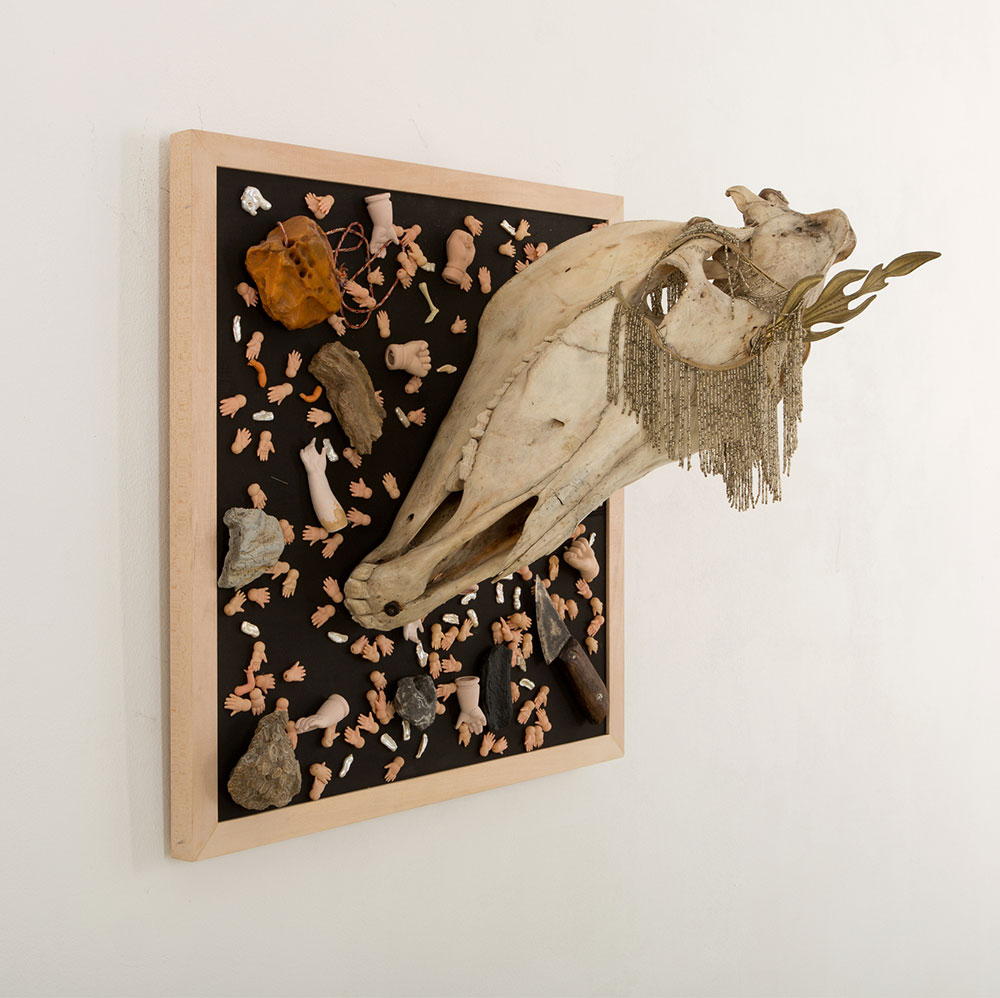
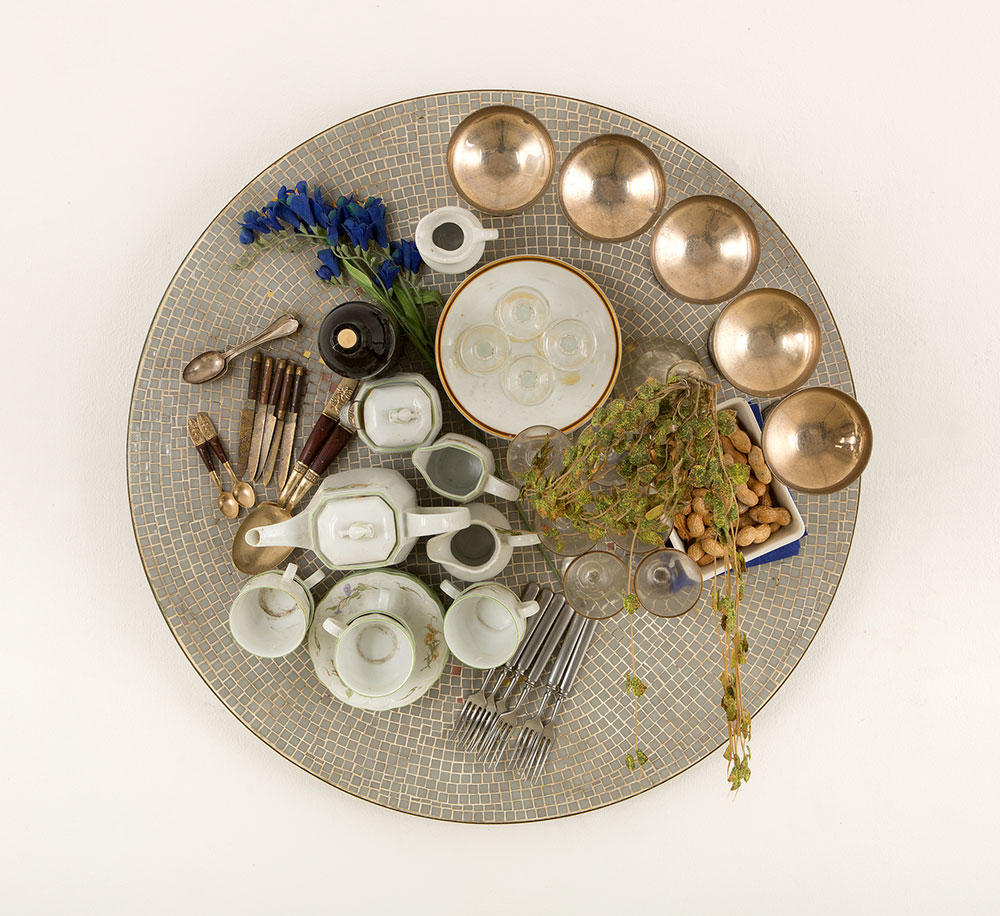
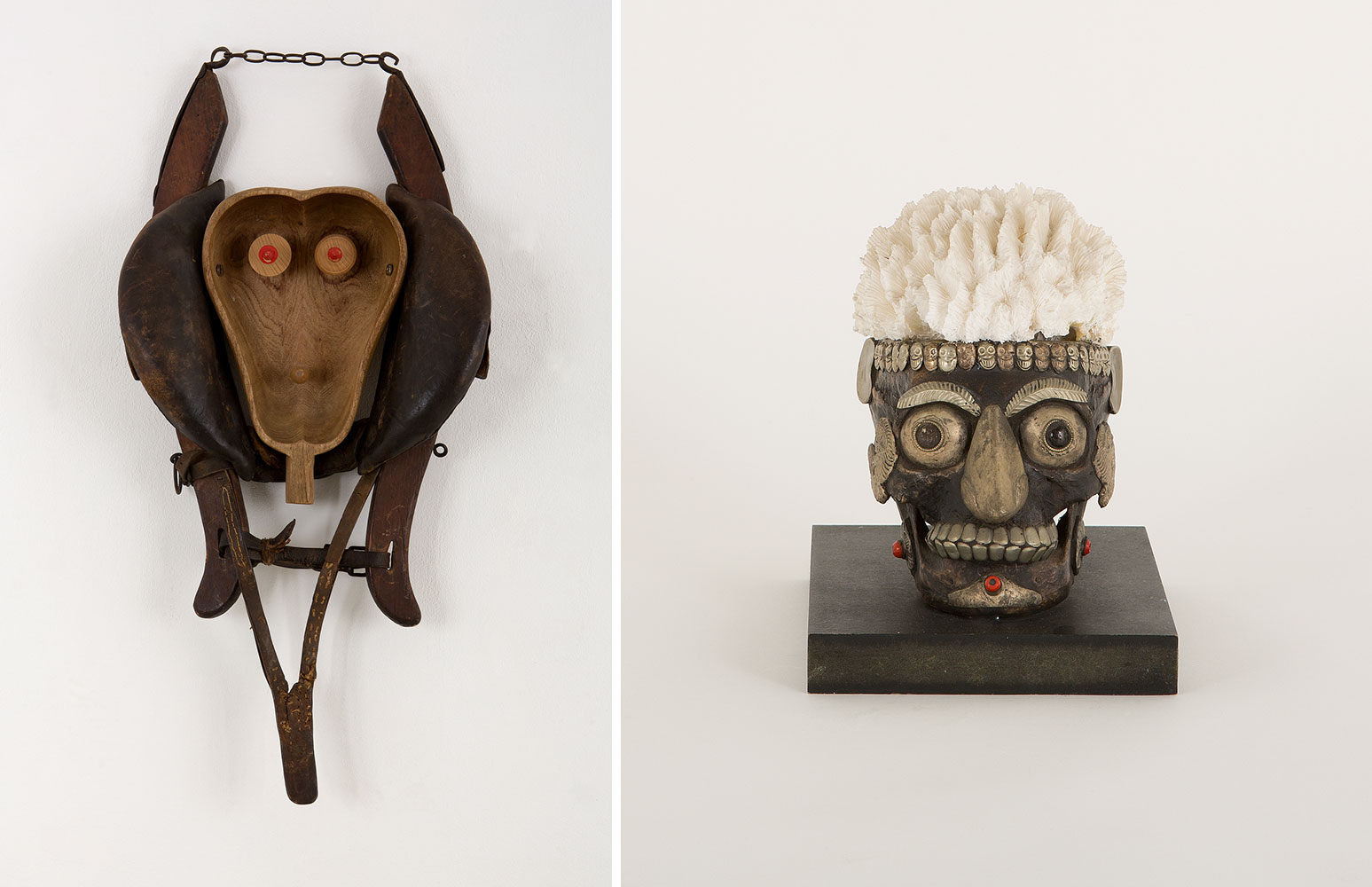
Right: Daniel Spoerri, Tipeter mit Korallenhirn, 2011, Assemblage, 36 x 26 x 30 cm, © Daniel Spoerri, Courtesy the artist and Galerie Krinzinger
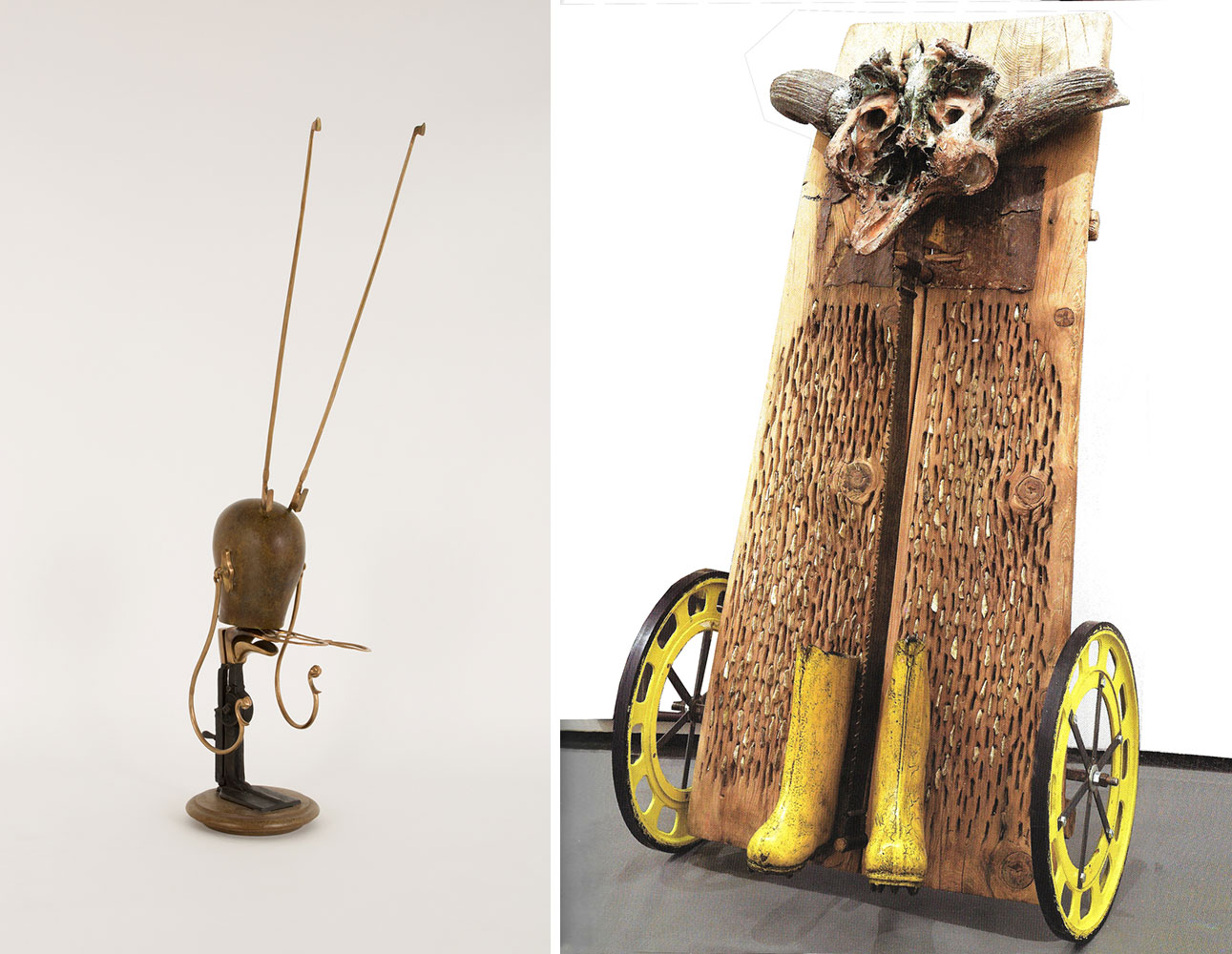
Right: Daniel Spoerri, Tribulum, 2008, Assemblage, 180 x 100 x 60 cm, © Daniel Spoerri, Courtesy the artist and Galerie Krinzinger
